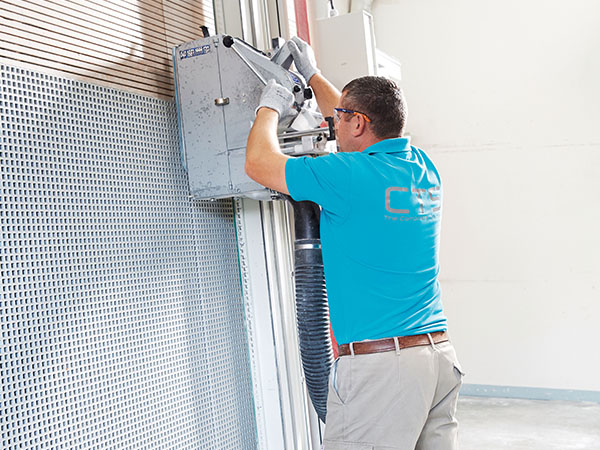Drilling and sawing
Although glass fibre reinforced plastic is extremely sturdy, it is almost as easy to process as wood. Sawing and drilling are among the most commonly used techniques.
Drilled holes with a diameter of up to 12 millimetres can be produced using a standard carbide drill (DIN 8037 or DIN 8038). For holes with a larger diameter, a diamond-studded drill is used.
A conventional jigsaw with a metal saw blade is suitable for smaller sawing work, for uncoupling GRP gratings or cutting GRP profiles into lengths, for example. In the case of larger sawing quantities, a band saw or circular saw, typically diamond-studded, is used. If glass fibre reinforced plastic is processed in enclosed rooms, dust should be removed by suction.
Connections
Rivets are ideally suited for connecting different GRP profiles. A high level of strength is ensured using a rivet gun or pliers, and this can be further increased through the additional usage of special adhesives.
If the connection will be subject only to lower levels of stress, then self-locking screws will provide sufficient strength. If the stress level will be higher, machine screws should be used which can also be treated with adhesives.

